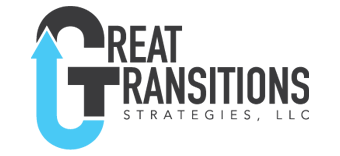A transitioning O-6 was on a Skill Bridge internship in March of 2020 when the COVID shutdown forced his company to go to the remote/hybrid environment. Watching his peer’s reaction to the emergency, he realized he was better equipped to handle the situation than the long-tenured executives. He went to the company leadership, told them what he thought the organization needed, how he was equipped to handle it and asked to lead the team through the crisis. Guess who succeeded?
He learned what the organization needed and translated his military skills into terms they understood and they hired him.
Three principles to help guide your transition
- Educate yourself on the needs of the organizations you are pursuing
- Educate the organizations on your capabilities to fulfill those needs
- Educate those considering you for a position how your leadership skills differentiate you
Leadership is the great differentiator and you have years of experience in high tempo, stressful, environments. Understand how your military leadership expertise and experiences fit the organizations and positions you are pursuing. However, leadership is not enough. Organizations are looking for knowledge and skills relevant to their industry.
Lessons learned from coaching many transitioning veterans:
- Most veterans do not fully understand how private-sector corporations operate
- You have to be able to relate your leadership skills directly to the positions you are pursuing
- Military skills and experiences are often misunderstood and undervalued in the private sector
- You have to educate those interviewing you that your skills and experiences directly fit the positions you are pursuing
Some corporations have completely mastered hiring veterans. Amazon and General Electric are two. Ask any veteran about Amazon and they will tell you about their Military Pathways Program. General Electric has a Junior Officer Leadership Program that is a two-year development program for separating junior officers.
These are examples of companies fully embracing what veterans bring to the table and make the transition easy. Other easy transitions are companies directly supporting the military. Many veterans will take these paths, putting their well-honed skills to use.
What about those who want to do something completely different than their military experience?
Take control of the process and become a student and an educator; a student of yourself and the organizations you are pursuing, and an educator to those in the organization. As a student build your understanding of first yourself, then organizations that interest you; their culture, how success is measured, and what is needed from you. As an educator, educate decision-makers in the organization on your capabilities and what you will contribute.
Considerations for Your Transition
Consider when to start. The transition takes time. I have worked with veterans who began planning 24 months prior to their transition to several who waited until the end. Two years is not too early. Think of your transition as a one-to-two-year distance learning degree.
Consider how to translate your military skills to the private sector. If you are transitioning at less than ten years of service you have been an operator. Working directly in your specialty applying the military skills of your specialty; intelligence, flying, driving, diving, maintaining, and leading at the tactical level.
The more senior, the more of a generalist you become. Why, because in your leadership roles you are responsible for executing the operational mission. If you are near the twenty-year mark, it is likely you could readily fit into operations roles in the private sector.
Educate yourself on how your skills translate to the private sector.
Consider why a potential employer would be reluctant to hire you? What specific skills do they think you are missing? Often it is specific industry knowledge, skills, and experience. I have seen service members rejected because they lacked specific profit/loss reporting, financial, and supply chain experience required for positions.
Educate yourself on how to translate your military skills and experiences into private sector specifics.
Summary
Transitioning is an education. You are in a self-directed education program, learning about yourself, other organizations, and how you are the best fit. The better you translate your value and fit with private-sector corporations, the smoother the transition.
- Know specifically what you bring to your next organization in their terms
- Know specifically how your leadership differentiates you in their terms
Your first military to civilian transition gives you the rare opportunity to explore an entire world of options available for you. Prepare for it.



